#jobim
Text

45 notes
·
View notes
Photo


Jobim was conceived fully a little later in development, with his full design not being finalized until just before Chapter 3 was released. He used to have a very “NOS4A2″ design, but it wasn’t intimidating enough so we went for a bizarre alien look to him instead.
The car headlight nipple windows are absolutely necessary to the design.
49 notes
·
View notes
Text

Antonio Carlos Jobim – Antonio Carlos Jobim’s Finest Hour
While Antonio Carlos Jobim is an essential figure in the music of Brazil, he also created a significant place for himself in American music as a great songwriter and a key figure in the tremendous popularity of bossa nova. Apart from his unique melodic gift, what makes Jobim’s work memorable is the complexity of mood he could evoke–the touch of sadness that colors the brightest bossa nova, the irony in the midst of joy, and the mixture of delicacy and resilience in his voice and piano.
6 notes
·
View notes
Video
youtube
Takatanga :: Antonio Carlos Jobim : Tide
11 notes
·
View notes
Text

só tinha de ser com você
11 notes
·
View notes
Text
#jobim#i don't know when and how I started to listen to this podcast#but it's been years#and it's my reading and study music every week#cuando los elefantes sueñan con la música#rtve
0 notes
Text
After a five month art hiatus, I’m really proud to have finished this. I’ve had these two other characters bouncing around my head, I had to make them into a trio. They’ll be getting into hijinks, tomfoolery & hit-lists.




#turts' art#my art#sketch#ink#sona#sharksona#mako shark#fursona#Cassie bardem#jobim#oc#original character#scalie#xoloitzcuintle#Caledonian gecko#dogsona
1 note
·
View note
Text
TOM JOBIM - Triste (Guitar arr. TAB sheet music, partitura)
ANTONIO CARLOS "TOM" JOBIM - TRISTE (Guitar arr. TAB SHEET MUSIC, partitura)Lyrics:
Best Sheet Music download from our Library.
Antonio Carlos Jobim
Please, subscribe to our Library. Thank you!Musical influences
Discography and compositions
ANTONIO CARLOS "TOM" JOBIM - TRISTE (Guitar arr. TAB SHEET MUSIC, partitura)
https://dai.ly/x8ff7ro
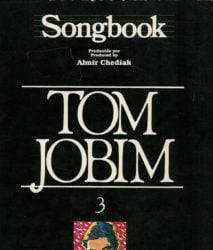
Lyrics:
Triste é viver na solidão
Na dor cruel de uma paixão
Triste é saber que ninguém
Pode viver de ilusão
Que nunca vai ser nunca vai dar
O sonhador tem que acordar
Tua beleza é um avião
Demais p'rum pobre coração
Que pára pra te ver passar
Só pra me maltratar
Triste é viver na solidão
'Triste' (meaning 'Sad' in English) is a bossa nova song composed in 1966 by Antônio Carlos Jobim, who also wrote the lyrics in English and Portuguese.
Background
Jobim wrote the song in late 1966 while staying at the Sunset Marquis Hotel in Los Angeles, while waiting for Frank Sinatra to return from a vacation in Barbados to begin recording his album Francis Albert Sinatra & Antônio Carlos Jobim (1967).
The first recording of the song was an instrumental version by Jobim for his 1967 Wave album. Sinatra recorded it with Jobim two years later in the sessions for his planned second album, SinatraJobim, which was eventually released as Sinatra & Company's Side A (1971).
Jobim recorded an English vocal version in 1980 on the album Terra Brasilis.
Antonio Carlos Jobim
Antônio Carlos Brasileiro de Almeida Jobim (January 25, 1927 – December 8, 1994), also known as Tom Jobim was a Brazilian composer, pianist, composer, arranger, and singer. Considered one of the great exponents of Brazilian music, Jobim internationalized bossa nova and, with the help of leading American artists, fused it with jazz in the 1960s to create a new sound with popular success. As such, he is sometimes referred to as the 'father of bossa nova'.
Jobim was a major force behind the creation of the bossa nova style, and his songs have been performed by many singers and instrumentalists internationally.
In 1965, the Getz/Gilberto album was the first jazz record to win the Grammy Award for Album of the Year. It also won for Best Jazz Instrumental Album – Individual or Group and for Best Engineered Album, Non-Classical. The album's single 'Garota de Ipanema' ('The Girl from Ipanema'), one of the most recorded songs of all time, won Record of the Year.
Jobim composed many songs that are now included in the standard jazz and pop repertoires. The song 'Garota de Ipanema' has been recorded more than 240 times by other artists.
His 1967 album with Frank Sinatra, Francis Albert Sinatra and Antônio Carlos Jobim, was nominated for Album of the Year in 1968.
Antônio Carlos Jobim was born in the middle-class district of Tijuca in Rio de Janeiro. His father, Jorge de Oliveira Jobim (São Gabriel, Rio Grande do Sul; 1889-1935), was a writer, diplomat, teacher and journalist.
He came from a prominent family, being the great-nephew of José Martins da Cruz Jobim, a senator, private councilor, and physician to Emperor Dom Pedro II. While studying medicine in Europe, José Martins added Jobim to his surname, paying homage to the town his family came from in Portugal, the parish of Santa Cruz de Jovim, Porto.
His mother, Nilza Brasileiro de Almeida (c. 1910-1989), was of partially indigenous descent from northeastern Brazil.
When Antônio was still a baby, his parents separated and his mother moved with her children (Antônio Carlos and his sister Helena Isaura, born February 23, 1931) to Ipanema, the beachside neighborhood that the composer would later would celebrate in their songs.
In 1935, when Jobim's elder died, Nilza married Celso da Frota Pessoa (died February 2, 1979), who would encourage the career of her stepson. It was he who gave Jobim his first piano. As a young man of impoverished youth, Jobim made a living playing in nightclubs and bars and later as an arranger for a record label before beginning to achieve success as a songwriter.
Musical influences
Jobim's musical roots were planted firmly in the work of Pixinguinha, the legendary musician and composer who pioneered modern Brazilian music in the 1930s. His teachers included Lúcia Branco and, beginning in 1941, Hans-Joachim Koellreutter, a German composer who lived in Brazil and introduced atonal and twelve-tone composition in the country.
Jobim was also influenced by French composers Claude Debussy and Maurice Ravel, and by Brazilian composers Ary Barroso and Heitor Villa-Lobos, who has been described as 'Jobim's most important musical influence'.
Among many topics, his lyrics talked about love, self-discovery, betrayal, joy, and especially about birds and the natural wonders of Brazil, such as the 'Mata Atlântica' forest, characters from Brazilian folklore, and his native city of Rio de Janeiro.
In the 1940s, Tom Jobim began playing the piano in bars and nightclubs in Rio de Janeiro, and in the early 1950s, he worked as an arranger at the Continental Studio, where he recorded his first composition, in April 1953, when Brazilian singer Mauricy Moura recorded Incerteza, a Tom Jobim composition with lyrics by Newton Mendonça.
Jobim rose to prominence in Brazil when he teamed up with poet and diplomat Vinicius de Moraes to write the music for the play Orfeu da Conceição (1956).
The most popular song on the show was 'Se Todos Fossem Iguais A Você' ('If Everyone Were Like You'). Later, when the play was adapted into a film, producer Sacha Gordine did not want to use the play's existing music. Gordine asked De Moraes and Jobim for a new score for the film Orfeu Negro, or Black Orpheus (1959). Moraes was at the time in Montevideo, Uruguay, working for the Itamaraty (the Brazilian Ministry of Foreign Affairs), so Jobim and he were only able to write three songs, mainly by phone ('A felize', 'Frevo' and 'Frevo'). Or nosso love ').
This collaboration proved successful, and de Moraes went on to write the lyrics for some of Jobim's most popular songs.
In 1958, the Brazilian singer and guitarist João Gilberto recorded his first album with two of Tom Jobim's most famous songs: Desafinado and Chega de Saudade. This album inaugurates the Bossa Nova movement in Brazil. The sophisticated harmonies of his songs caught the attention of jazz musicians in the United States, mainly after Tom Jobim's first performance at Carnegie Hall in 1962.
A key event in making Jobim's music known in the English-speaking world was his collaboration with American jazz saxophonist Stan Getz, Brazilian singer João Gilberto, and Gilberto's wife at the time, Astrud Gilberto, resulting in two albums, Getz/Gilberto. (1963) and Getz/Gilberto Vol. 2 (1964).
The release of Getz/Gilberto created a bossa nova craze in the United States and later internationally. Getz had previously recorded Jazz Samba with Charlie Byrd (1962) and Jazz Samba Encore! with Luiz Bonfa (1964). Jobim wrote many of the songs on Getz/Gilberto, which became one of the best-selling jazz albums of all time, and turned Astrud Gilberto, who sang on 'Garota de Ipanema' (The Girl from Ipanema) and ' Corcovado', into an international sensation.
At the 1965 Grammy Awards, Getz/Gilberto won the Grammy Award for Album of the Year, the Grammy Award for Best Jazz Instrumental Album, Individual or Group, and the Grammy Award for Best Non-Classical Engineered Album. 'The Girl from Ipanema' won the Grammy Award for Record of the Year. Among his later successes is 'Águas de Março' (Waters of March 1972), for which he wrote lyrics in both Portuguese and English, and which was later translated into French by Georges Moustaki (Les Eaux de Mars, 1973 ).
In early 1994, after finishing his Antonio Brasileiro album, Jobim complained to his doctor, Roberto Hugo Costa Lima, of urinary problems. He underwent surgery at Mount Sinai Hospital in New York City on December 2, 1994.
On December 8, while recovering from an operation, he suffered a cardiac arrest caused by a pulmonary embolism and two hours later, another cardiac arrest, from which he died. .
He was survived by his children and grandchildren. His last album, Antonio Brasileiro, was released posthumously three days after his death.
His body remained in state until he was duly buried on December 20, 1994. He is buried at the Cemitério São João Batista in Rio de Janeiro.
Jobim's Legacy
Jobim is widely considered to be one of the most important composers of the 20th century. Many of his songs are jazz standards.
American jazz singers Ella Fitzgerald and Frank Sinatra featured Jobim's songs on their albums Ella Abraça Jobim (1981) and Francis Albert Sinatra & Antônio Carlos Jobim (1967), respectively. The 1996 CD Wave: Antonio Carlos Jobim's Songbook included performances of Jobim themes by Oscar Peterson, Herbie Hancock, Chick Corea, and Toots Thielemans.
Jobim was an innovator in the use of sophisticated harmonic structures in popular songs. Some of his melodic turns, like the melody that he insists on the major seventh of the chord, became common in jazz after he used them.
Brazilian collaborators and performers of Jobim's music include Vinicius de Moraes, João Gilberto (often credited as co-creator or creator of bossa nova), Chico Buarque, Edu Lobo, Gal Costa, Elis Regina, Sérgio Mendes, Astrud Gilberto and Flora Purim, Eumir Deodato and conductor/composer Claus Ogerman arranged many recordings of Jobim's tunes.
He won a Lifetime Achievement Award at the 54th Grammy Awards in 2012. As a posthumous tribute, on January 5, 1999, the Municipality of Rio de Janeiro changed the name of Rio's Galeão International Airport, located on Governador Island, to bear the name of the composer. Galeão airport is explicitly mentioned in his composition 'Samba do Avião'. In 2014, Jobim was posthumously inducted into the Latin Songwriters Hall of Fame.
In 2015, Billboard named Jobim one of the 30 most influential Latin artists of all time.
American contemporary jazz singer Michael Franks dedicated his 1995 album Abandoned Garden to Jobim's memory. English singer-songwriter George Michael frequently acknowledged Jobim's influence. His 1996 album Older was dedicated to Jobim, and he recorded 'Desafinado' on Red Hot + Rio (1996) with Astrud Gilberto.
The official mascot of the 2016 Summer Paralympics in Rio de Janeiro, Tom, was named after him.
Discography and compositions
Studio Albums:
1963: El compositor de Desafinado, juega ( Verve )1965: El maravilloso mundo de Antônio Carlos Jobim ( Warner Bros. Records )1966: Amor, cuerdas y Jobim ( Warner Bros. Records )1967: Un cierto señor Jobim ( Warner Bros. Records )1967: Ola ( CTI / A&M )1970: Marea (A&M)1970: Flor de piedra (CTI)1973: Jobim ( MCA )1976: Urubu (Warner Bros.)1980: Terra Brasilis (Warner Bros.)1987: Passarim (Verve)1995: Antônio Brasileiro ( Colombia )1995: Inédito ( Ariola )1997: Minha Alma Canta (Lumiar)
Cooperations:
- 1954: Sinfonia do Rio de Janeiro (Continental), con Billy Blanco
- 1956: Orfeu da Conceição (Odeón), con Vinicius de Moraes
- 1957: "O Pequeno Príncipe" (Festa), audiolibro del que Jobim compuso la banda sonora
- 1961: Brasilia - Sinfonia Da Alvorada (Colombia), con Vinicius de Moraes
- 1964: Getz / Gilberto (Verve)
- 1964: Caymmi Visita Tom (Elenco / Polygram / Philips ), con Dorival Caymmi
- 1967: Francis Albert Sinatra y Antônio Carlos Jobim (Reprise)
-
- 1974: Elis & Tom ( Philips ), con Elis Regina
- 1977: Miúcha & Antônio Carlos Jobim ( RCA ), con Miúcha
- 1979: Miúcha & Tom Jobim ( RCA ), con Miúcha
- 1981: Edu & Tom ( Philips ), con Edu Lobo
- 1983: Gabriela ( RCA ), banda sonora original de la película "Gabriela, Cravo e Canela"
Read the full article
#jobim#partitura#sheetmusicdownload#sheetmusicscoredownloadpartiturapartitionspartitinoten楽譜망할음악ноты
0 notes
Photo

Chega de Saudade ~ now over 5 million views on YouTube! ♥️ Watch here: https://youtu.be/SZFza__l-5s or from link in bio! #jobim #tomjobim #bossanova (at Los Angeles, California) https://www.instagram.com/p/Cp3h2xtNPbo/?igshid=NGJjMDIxMWI=
1 note
·
View note
Text
Unlocking the Magic of Jobim's Harmony: A Step-by-Step Guide to 'The Girl From Ipanema' Jazz Harmony Lesson
Welcome to this jazz tutorial on Jobim’s timeless classic, The Girl From Ipanema. Let’s take a closer look at the intricate harmony of this song.
In this video we’ll see how Jobim’s use of out-of-the-ordinary dominant chords is simply brilliant. It’s no wonder why Jobim is known for pushing the boundaries of traditional harmony, always keeping us on our toes with unexpected but stunning chord…
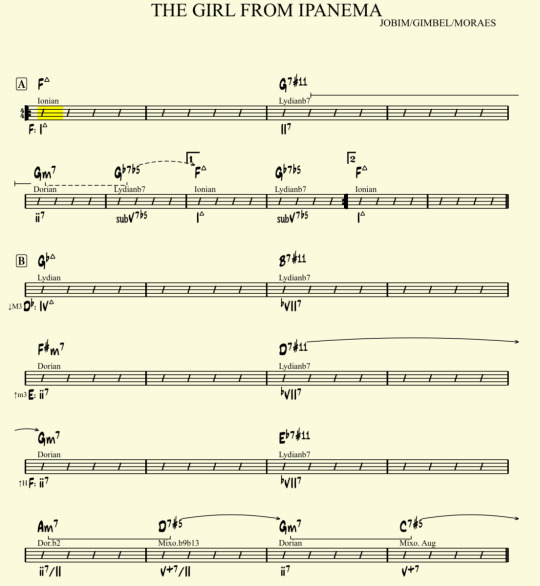
View On WordPress
#how to analyze jazz standards#jazz analysis#jazz harmony#Jobim#music education#the girl from Ipanema#the jazz standards progression book#tonal harmony
0 notes
Photo

71 notes
·
View notes
Note
What is your process when designing characters?
For Kura5 it really depends on how that character is going to be used. Sometimes this character needs a more thorough design because 2D art needs to be made of them. A lot of times these characters are workshopped with the team where a bunch of doodles are drawn until we reach a general idea that everyone likes. Kinda like this.
After that a more thorough character sheet might get drawn showing outfit/design specifics, like with Lydia below. Once that's all done the model and/or the character portrait is produced.

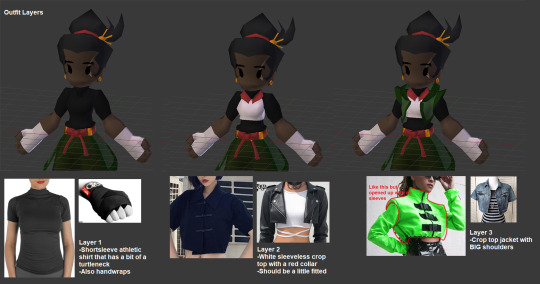

...But then there's also a few characters where I just doodled on a page for a rough idea then just put shapes together in Blender until I liked them, since I didn't expect anyone to draw a robot.
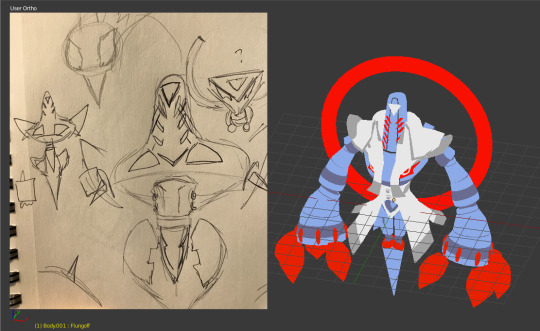
2 notes
·
View notes
Photo

Stan Getz & Charlie Byrd – Samba De Uma Nota So (One Note Samba)
Samba De Uma Nota So (Jobim, Mendoca).
Stan Getz – tenor saxophone
Charlie Byrd – guitar
8 notes
·
View notes
Text
Parece que dizes...
Te amo,
Maria. <3
1 note
·
View note
Text
Hello friends!! I leave for you my new video of the great Jobim song "Wave"🎵👌✨. Hope you like it. Don't forget to leave your like and shaer!! Thanks 🙏
More"Live do Diego" videos on https://diegoavendanopereira.com/live-do-diego/
1 note
·
View note
Text
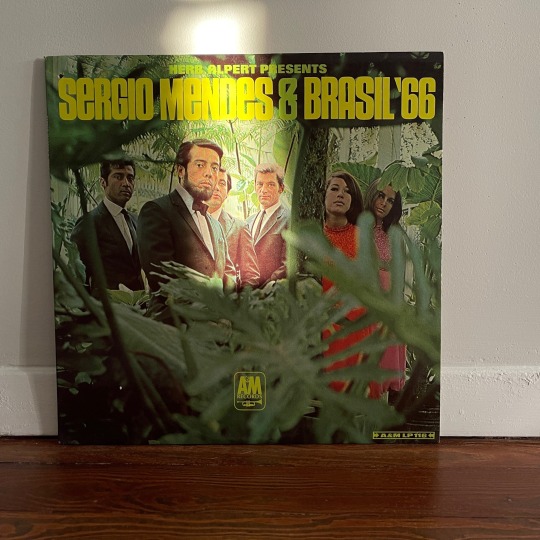
Sergio Mendes & Brasil '66 – Herb Alpert Presents Sergio Mendes & Brasil '66 (A&M Records – LP-116, 1966 🇺🇸) It’s a fun treat for a record collector to have the same album in both mono and stereo. Comparing and contrasting and listening and enjoying are what it’s all about. IMHO, most records from the 60s - like this Sergio Mendes album - are best heard in mono. What’s your preference?
#vinyl#record#records#recordcollection#vinylcollection#vinylaficionado#vinylcollector#vinylcommunity#nowspinning#recordcollecting#hifi#music#recordcollector#vinylrecords#cratedigger#albumcoverart#bossanova#brazil#sergio mendes#jobim
1 note
·
View note